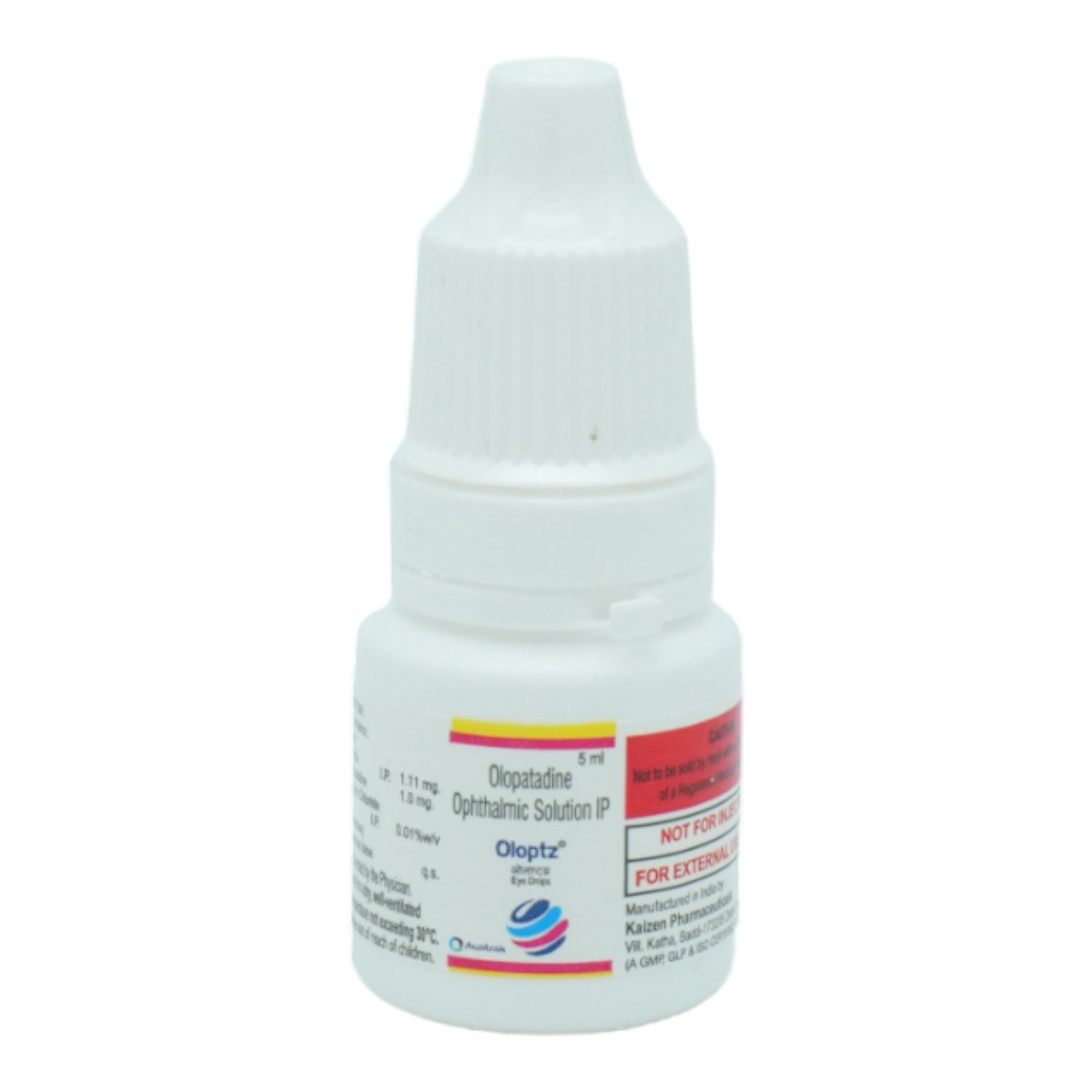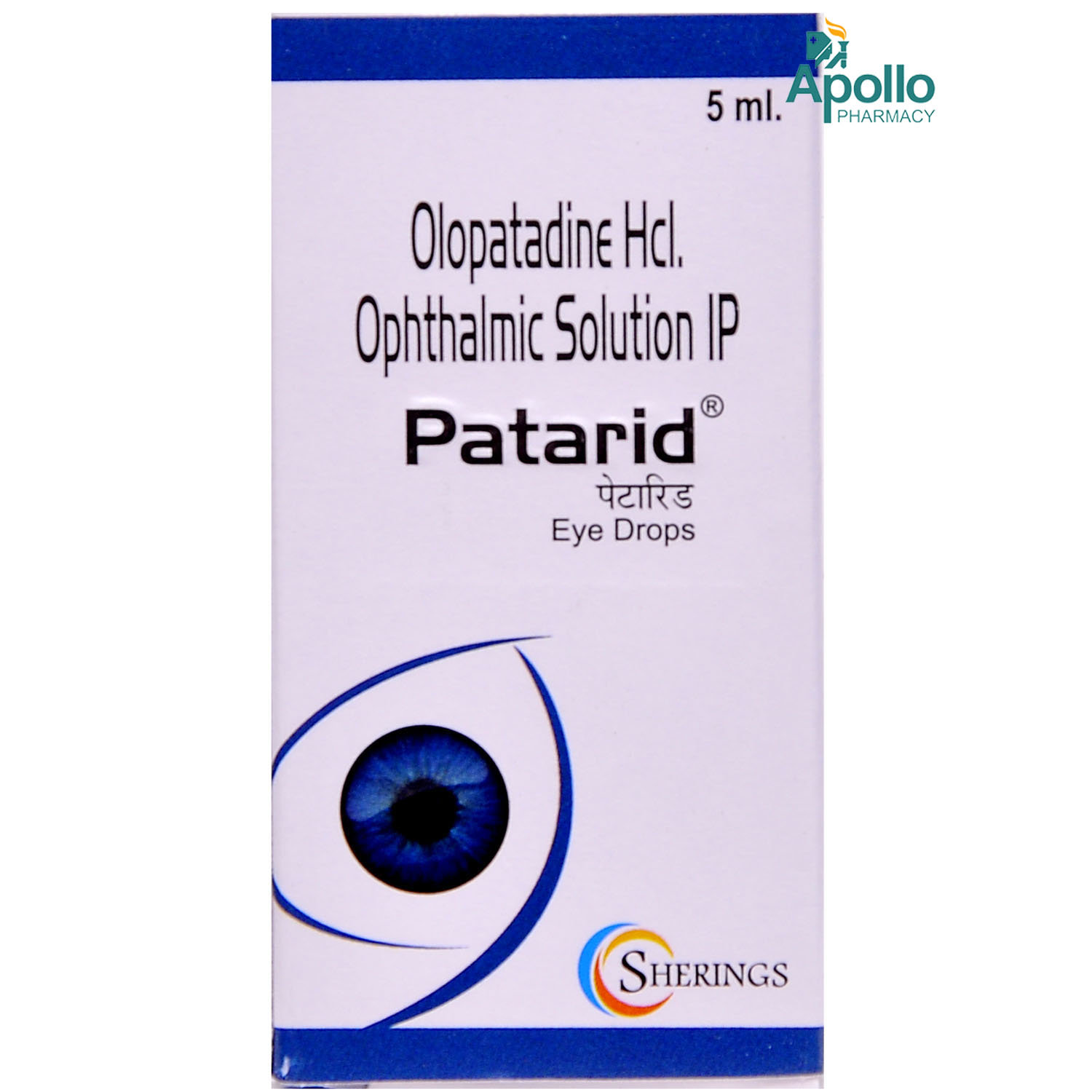Olopma Eye Drops 5 ml


MRP ₹144
(Inclusive of all Taxes)
₹21.6 Cashback (15%)
Provide Delivery Location
Online payment accepted
 Prescription drug
Prescription drugWhats That
Composition :
Manufacturer/Marketer :
Consume Type :
Expires on or after :
Return Policy :
About Olopma Eye Drops 5 ml
Olopma Eye Drops 5 ml belongs to the 'antihistamine' class of drugs, primarily used to treat signs and symptoms of seasonal allergic conjunctivitis. Olopma Eye Drops 5 ml is also used to treat eye itching or redness caused by pollen, ragweed, grass, animal hair, or dander. Allergic conjunctivitis is an inflammation of the conjunctiva (the clear tissue that covers the white part of the eye and the inside of the eyelids) caused by an allergic reaction.
Olopma Eye Drops 5 ml contains Olopatadine, which inhibits the release of histamine (chemical messengers released due to an allergic response in the body) from mast cells. Thereby relieves itching, burning, redness, and watering in the eyes caused by allergic conjunctivitis.
Your doctor will advise on how often you need to use Olopma Eye Drops 5 ml based on your medical condition. Some common side effects of Olopma Eye Drops 5 ml include eye pain, eye irritation, headache, blurred vision, burning/stinging/redness/dryness of the eye, eyelid swelling, and eye discomfort. These side effects do not require medical attention and gradually resolve over time. If any of the side effects persist or worsen, consult a doctor.
Let your doctor know if you are allergic to Olopma Eye Drops 5 ml or any other medications. Avoid contact of dispensing container with the eye, eyelids, fingers, and other surfaces to prevent contamination. Pregnant and breastfeeding women should consult their doctor before starting Olopma Eye Drops 5 ml. This medicine may cause temporary blurred vision; hence drive only when you are alert and have clear vision. Olopma Eye Drops 5 ml is not recommended for children under three years of age.
Uses of Olopma Eye Drops 5 ml
Directions for Use
Key Benefits
Olopma Eye Drops 5 ml contains Olopatadine, an antihistamine drug. It treats signs and symptoms of seasonal allergic conjunctivitis. It relieves itching, burning, redness, and watering in the eyes caused by allergic conjunctivitis. It works by inhibiting the release of histamine (chemical that causes allergic symptoms like itchy eyes) from mast cells.
Storage
Drug Warnings
Inform your doctor if you have any allergic reactions to Olopatadine before starting Olopma Eye Drops 5 ml. Avoid touching the dropper with bare hands or taking it closer to the eyelids while administering drops since it contaminates the solution. If you wear contact lenses, remove them while administering the medicine into the eye. It is advised to check with your doctor before using Olopma Eye Drops 5 ml if you are pregnant or breastfeeding. Avoid driving or operating machines since Olopma Eye Drops 5 ml may cause temporary blurred vision for a while. Olopma Eye Drops 5 ml is not recommended for children below three years.
Drug-Drug Interactions
Drug-Drug Interactions
Login/Sign Up
Using sodium oxybate together with Olopma Eye Drops 5 ml nasal may increase the side effects
How to manage the interaction:
Although there is a possible interaction between Olopma Eye Drops 5 ml and Sodium oxybate, you can take these medicines together if prescribed by a doctor. Consult a doctor if you experience drowsiness, dizziness, lightheadedness, confusion, depression, low blood pressure, slow or shallow breathing, and impairment in thinking, judgment, and motor coordination. Do not discontinue any medications without consulting a doctor.
Using Olopma Eye Drops 5 ml together with citalopram enhances drowsiness, and raises the likelihood of depressed feelings, which can decrease mental and physical abilities and interfere with daily functioning.
How to manage the interaction:
Although there is a possible interaction between Olopma Eye Drops 5 ml and Citalopram, you can take these medicines together if prescribed by a doctor. Do not stop using any medications without a doctor's advice.
Drug-Food Interactions
Drug-Food Interactions
Login/Sign Up
Diet & Lifestyle Advise
- Manage stress, eat healthily, drink plenty of water, exercise regularly, and get plenty of sleep.
- Eat food rich in antioxidants such as berries, spinach, kidney beans, dark chocolate, etc.
- Try to maintain good hygiene to keep your eyes clean and irritant-free.
- Avoid staring at the digital screens for longer durations. Rest your eyes every 20 minutes.
- If you wear contact lenses: Clean and replace contact lenses more often. Never share contact lenses. Always remember to wash your hands before inserting and after removing the contact lens.
- Wash your hands thoroughly and do not touch the dropper before using drops to avoid contamination.
- Know your allergy triggers, such as pollen, dust and other factors.
Side Effects of Olopma Eye Drops 5 ml
- Eye pain
- Eye irritation
- Headache
- Blurred vision
- Burning/stinging/redness/dryness of the eye
- Eyelid swelling
- Eye discomfort
Habit Forming
Therapeutic Class
All Substitutes & Brand Comparisons
RX
Out of StockVepat Eye Drops 5 ml
VSD Life Science Ltd
₹124
(₹24.8/ 1ml)
4% CHEAPERRX
Out of StockOloptz Eye Drops 5 ml
Austrak Pvt Ltd
₹149
(₹26.82/ 1ml)
3% COSTLIERRX
Patarid Eye Drops 5 ml
Austrak Pvt Ltd
₹164
(₹29.52/ 1ml)
13% COSTLIER
Product Substitutes
Author Details
We provide you with authentic, trustworthy and relevant information
Drug-Diseases Interactions
Drug-Diseases Interactions
Login/Sign Up
FAQs
Olopma Eye Drops 5 ml works by inhibiting the release of histamine (chemicals that cause allergic symptoms like itchy eyes) from mast cells, thus relieving symptoms like itching, burning, redness, and watering in the eyes caused by allergic conjunctivitis.
It is advised to remove your contact lens if you are wearing them while administering Olopma Eye Drops 5 ml. Also, remember to wash your hands before and after administering the medicine to avoid contamination.
If you use other eye ointments/drops along with Olopma Eye Drops 5 ml, it is advised to maintain a gap of at least 5-10 minutes after each administration. Also, use eye drops before applying any eye ointment.
Olopma Eye Drops 5 ml can cause temporary blurry vision immediately after applying. Avoid driving and operating machinery in such cases until you feel better. If the effect persists longer, seek medical attention.
Avoid the contact of the dropper or tip with fingers, eyes, and eyelids when using Olopma Eye Drops 5 ml. Topical eye products, when contaminated by patients with eye diseases, may result in eye infections.
Drug-Drug Interactions Checker List
- DIPHENHYDRAMINE
- CETIRIZINE
- ESCITALOPRAM
- ALPRAZOLAM
Disease/Condition Glossary
Allergic conjunctivitis (eye allergy): Allergic conjunctivitis, also known as eye allergy, is the immune response that occurs when the eye comes in contact with an irritating substance known as an allergen. It is of three types: allergic, infective, and acute/chronic conjunctivitis. Allergens include dust, smoke, dander, mold, or pollen. Eye allergy symptoms include itching, burning sensation, watery eyes, red/pink eyes, scaling around the eyes, and swollen or puffy eyelids. It can be passed from one infected person to another; hence precaution like wearing sunglass or distancing is required in public places.

Have a query?
Alcohol
Safe if prescribed
There is limited information on how alcohol consumption affects Olopma Eye Drops 5 ml. Please consult your doctor.
Pregnancy
Consult your doctor
Please consult your doctor if you are planning to become pregnant or already pregnant before starting Olopma Eye Drops 5 ml.
Breast Feeding
Consult your doctor
Olopma Eye Drops 5 ml is not recommended for breastfeeding women unless it is necessary. Please consult your doctor if you are breastfeeding.
Driving
Safe if prescribed
Olopma Eye Drops 5 ml may cause side effects like blurry vision, affecting your driving ability. Do not drive or operate machinery in such cases. Drive only when you are alert and have clear vision.
Liver
Consult your doctor
Let your doctor know if you have any history of liver diseases. Your doctor will weigh the benefits and potential risks before prescribing Olopma Eye Drops 5 ml.
Kidney
Consult your doctor
Let your doctor know if you have any history of kidney diseases. Your doctor will weigh the benefits and potential risks before prescribing Olopma Eye Drops 5 ml.
Children
Safe if prescribed
Olopma Eye Drops 5 ml is not recommended for children below three years. The dose may have to be adjusted by your doctor depending upon the condition of the child's disease and age.







